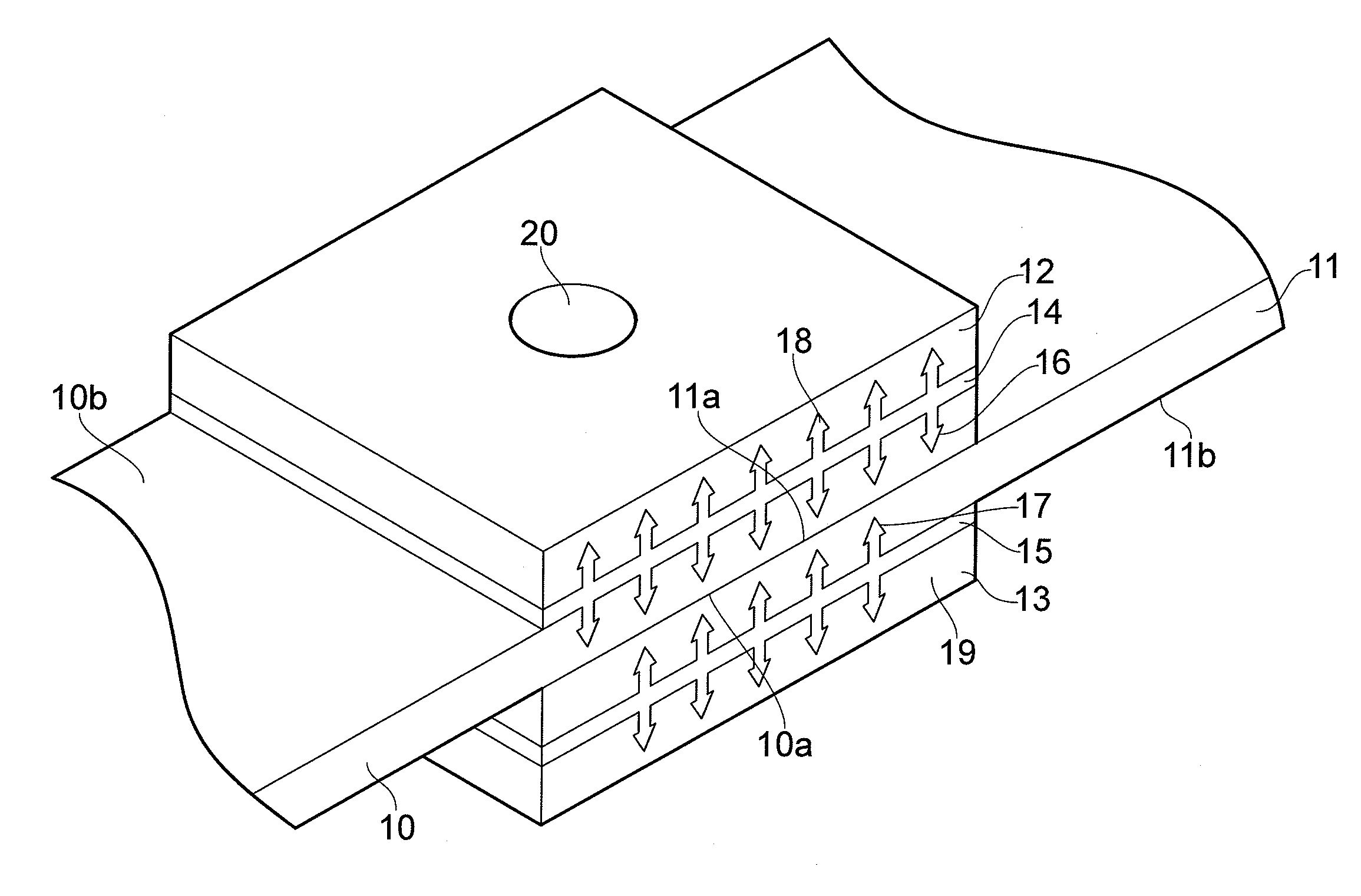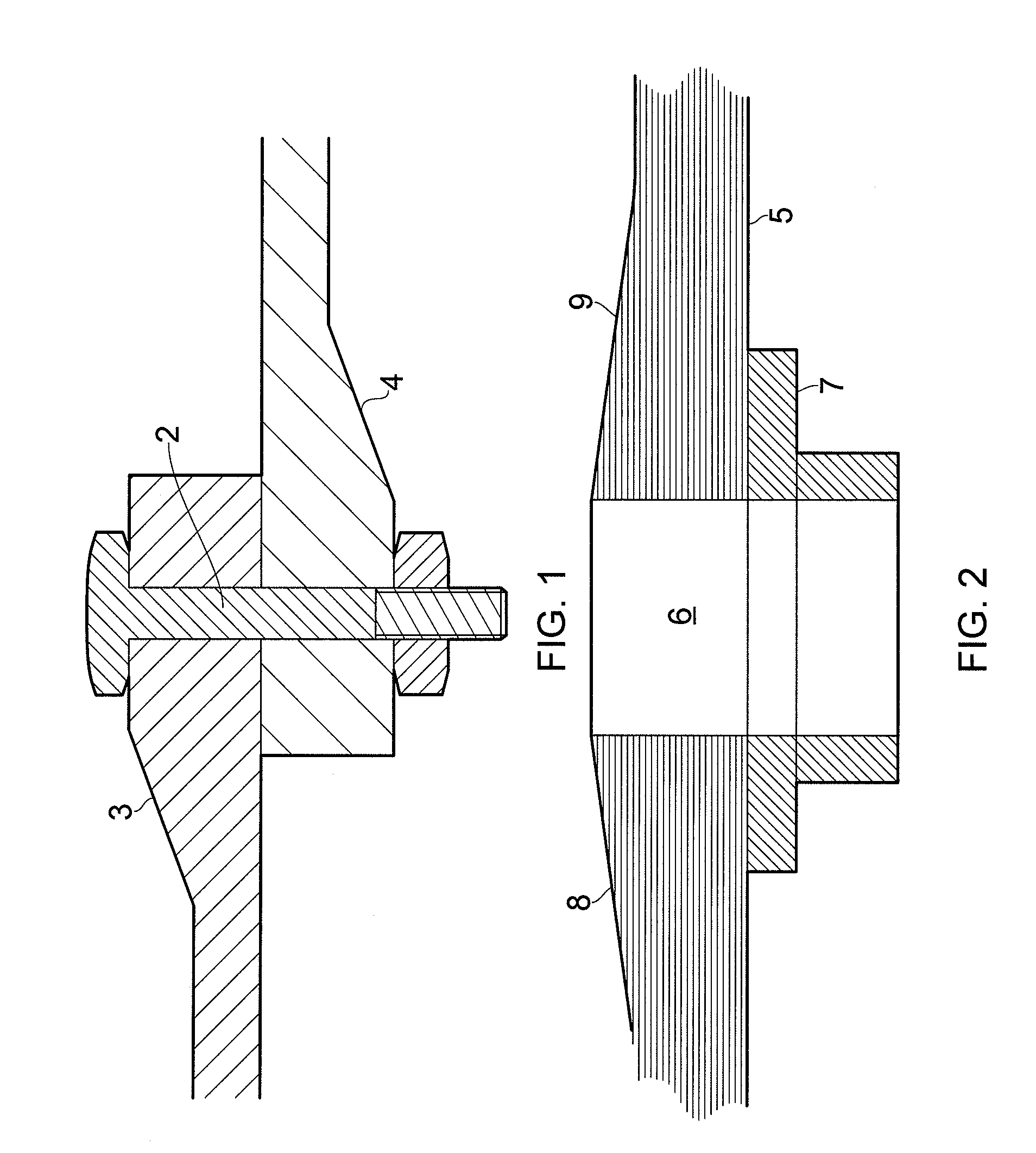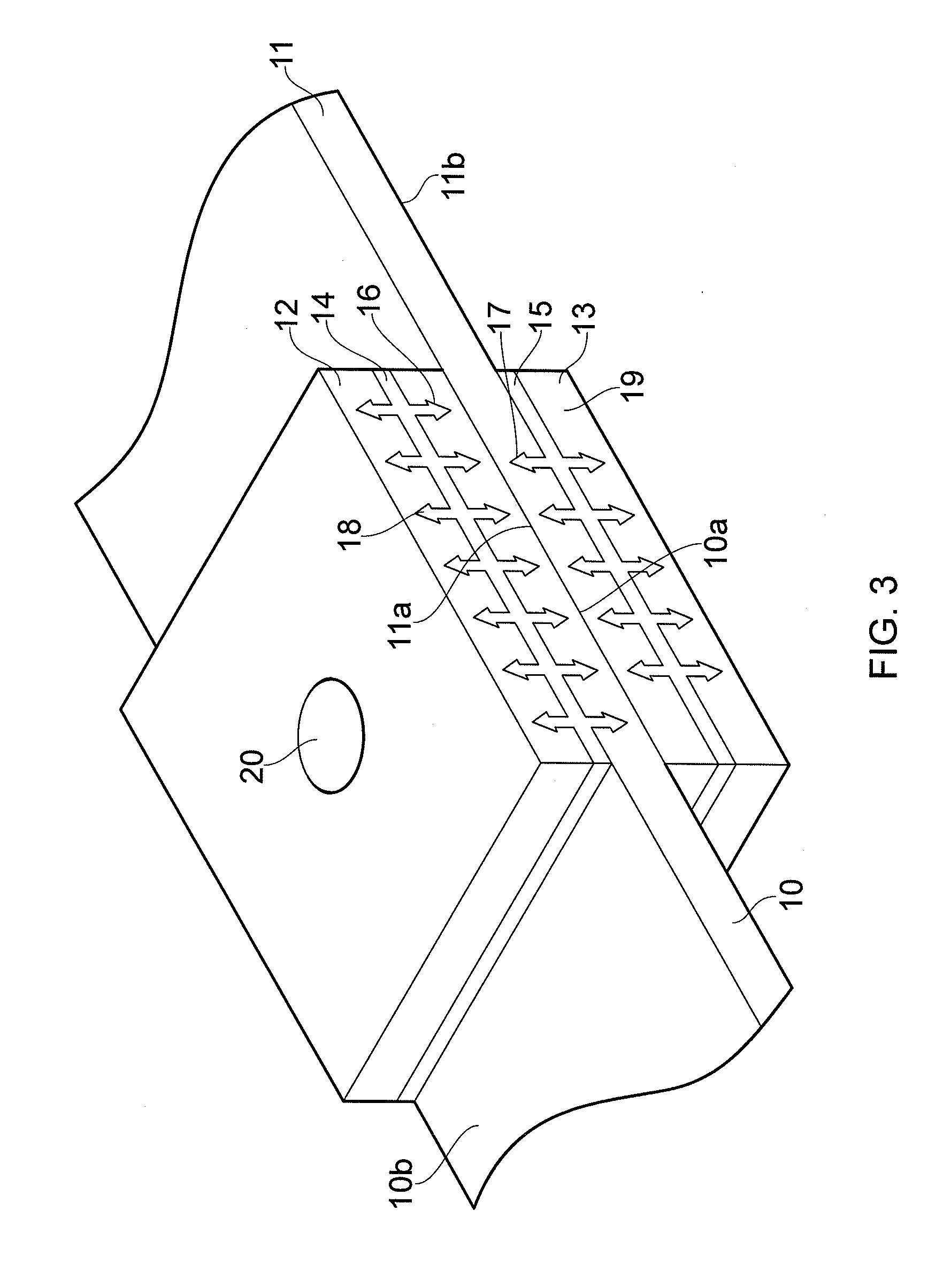Composite structure
a composite and structure technology, applied in the field of composite structures, can solve the problems of complex and time-consuming operation of delamination between, inability to increase the thickness abruptly, and inability to achieve the effect of increasing the pull-through strength of the join
- Summary
- Abstract
- Description
- Claims
- Application Information
AI Technical Summary
Benefits of technology
Problems solved by technology
Method used
Image
Examples
Embodiment Construction
)
[0040]A joint shown in FIG. 3 comprises a first part 10 and a second part 11 each having an inner face 10a, 11a, and an outer face 10b, 11b. Each part is formed from a series of plies of fibre-reinforced composite material. The inner faces 10a, 11a overlap partially to form a single-lap joint. A doubler plate 12, 13 is attached to the outer face of each part by a respective interface plate 14, 15. Each interface plate carries an array of pointed prongs 16, 17 on its inner side which partially penetrates a respective one of the parts 10, 11. Each interface plate also carries an array of pointed prongs 18, 19 on its outer side which partially penetrates a respective one of the doubler plates 12, 13. A hole 20 is drilled through the joint and a fastener (not shown) is passed through the hole 20 to secure the joint.
[0041]A method of manufacturing a joint similar to the joint of FIG. 3 will now be described with reference to FIGS. 4-8
[0042]An interface plate 21 is first manufactured by ...
PUM
| Property | Measurement | Unit |
|---|---|---|
| distance | aaaaa | aaaaa |
| structure | aaaaa | aaaaa |
| cross-sectional area | aaaaa | aaaaa |
Abstract
Description
Claims
Application Information
 Login to View More
Login to View More - R&D
- Intellectual Property
- Life Sciences
- Materials
- Tech Scout
- Unparalleled Data Quality
- Higher Quality Content
- 60% Fewer Hallucinations
Browse by: Latest US Patents, China's latest patents, Technical Efficacy Thesaurus, Application Domain, Technology Topic, Popular Technical Reports.
© 2025 PatSnap. All rights reserved.Legal|Privacy policy|Modern Slavery Act Transparency Statement|Sitemap|About US| Contact US: help@patsnap.com



